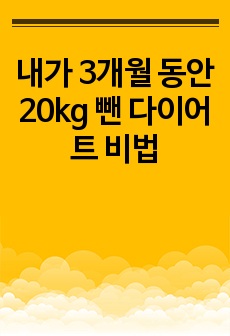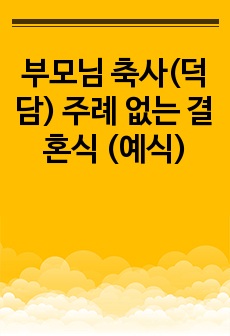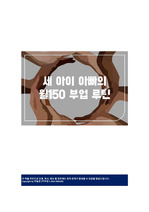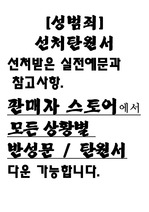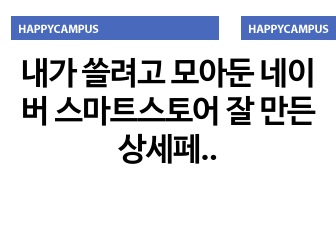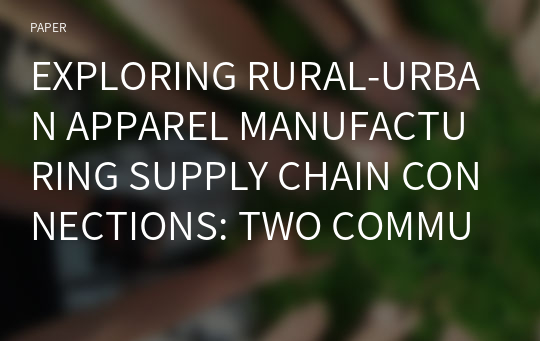EXPLORING RURAL-URBAN APPAREL MANUFACTURING SUPPLY CHAIN CONNECTIONS: TWO COMMUNITY CASE STUDIES
* 본 문서는 배포용으로 복사 및 편집이 불가합니다.
서지정보
ㆍ발행기관 : 글로벌지식마케팅경영학회(GFMC)
ㆍ수록지정보 : GFMC Session1
ㆍ저자명 : Nancy J. Miller, Carol Engel-Enright
ㆍ저자명 : Nancy J. Miller, Carol Engel-Enright
영어 초록
Introduction The manufacturing of apparel is the third-largest industry in the world, generating $700 billion annually (Jacobo, 2016). However, over the last 20 years, the US has lost 90% of its apparel manufacturing jobs (Bland, 2013). In response, the US Department of Commerce considers the importance of strengthening American manufacturing to be a key piece of economic recovery. They stated that large manufacturers needed to play a key role in, “cultivating the capabilities of small firms in their supply chains and spurring cross-pollination of expertise across firms” (Supply Chain Innovation: Strengthening Small Manufacturing, 2015, p. 3). This National Science Foundation funded research investigates the development of new, small US cut and sew firms as providing a potentially important link with larger, urban firms in the US apparel manufacturing supply chain. The objectives of this qualitative research are to: 1) ascertain social as well as economic challenges to establishing viable cut and sew firms in two rural US communities; and 2) examine the emerging issues in the apparel manufacturing supply chain; and 3) build propositions for research directions. Theoretical framework From an economic-sociological perspective, business, organizations, are embedded in larger institutional environments (DiMaggio & Powel, 1983, Granovetter, 1985, Meyer & Rowan, 1977, Meyer & Scott, 1983). The firm is seen as a part of a social-economic system with strong ties to others that can offer both business advantages (Di Maggio & Powel, 1983) or disadvantages (Uzzi, 1997). Institutional theory thus links social and cultural meaning systems or norms to the business environment (Handelman & Arnold, 1999). An Institutional theoretical framework proposes that in the economic environment, there are norms or rules that participants are expected to comply with if the organizations involved are to receive support and achieve legitimacy (Arnold, Handelman, & Tigert, 1996). Business owners or managers strive to legitimize their businesses, thus elevating investors’, suppliers’, and potential collaborators’ confidence in their competency to provide the specified products or services. This theory provides a foundation for examining the process through which small startup businesses, particularly rural apparel cut and sew firms, balance economic strategic actions and adherence to societal norms internally within their community and externally across a variety of apparel supply chain businesses located in non-adjacent urban communities. Current approach and preliminary results Using the Institutional theoretical perspective, we follow the initial stages of development for two apparel cut and sew centers in rural communities and their navigation of new businesses into the apparel manufacturing industry. Prior to outsourcing of apparel, many small agricultural-based communities across the state had manufacturing centers that provided income for local community members. Community leaders have long sought ideas for returning light manufacturing to their communities for local investment, job creation, and economic growth. Rural county economic development officers set up community interest meetings to see if there was interest in addressing the apparel industry need for quick speed-to-market and greater quality control through domestic manufacturing located closer to company headquarters within the state. Meetings in two communities, located in the northeastern part of the state, generated interest from local investors who have recently moved to open cut and sew centers. Four additional communities, located in the southeastern section of the state, await proof-of-concept prior to moving forward. Given the larger plan for the centers, the concept of specialization in manufacturing was determined for growth and expansion across the state; thus, one center was focused on woven apparel production and the other on knit apparel production. Cooperation and collaboration were important business values to prevent price competition and to potentially provide fulfillment of large scale orders. Longitudinal approach and research questions To address the objectives of this early stage work we used a case study approach to capture information. Data was collected from US Census Bureau and from interviews with investors, managers, workers, large manufacturing management, industry specialists in sourcing and equipment, as well as individuals connected to economic development and Extension. Please see Table 1. summarizing case study findings and emerging themes. In addition to these findings we employ a method frequently found in the analysis of an institutional theoretical perspective known as event history analysis. In time, this study will measure the temporal and sequential unfolding of unique events that transform the interpretation and meaning of social and economic structures (Steel, 2005; Thorton & Ocasio, 2008). This method will enable accommodation of data at multiple levels of analysis involving the individual (members of the cut and sew centers), organizational (cut and sew center firms), and environment (community and industry interactions). Event history is used to assess the five elementary concepts of – state (dependent variable, cut and sew center continuance), event (defines the transitions or experiences of the cut and sew centers), duration (length of time), risk period (potential for exposure to the particular event), censoring (not experiencing the event) (Vermunt, 2007). Thus far, we have initial case study data and documentation of events for two newly established cut and sew centers, but will continue to collect data as four additional cut and sew centers evolve. The following research questions address the five elementary concepts. We address the following research questions in meeting Objective 1 of this study: RQ 1. What are the social institutional centered events and consequences? RQ 2. How do different economic organizations contribute to firm evolution? RQ 3. What risks are involved that could inhibit or enable firm development? To address Objective 2 of this study, we focus on the following research questions framed around emerging issues expected to shape the apparel industry: RQ 4. What are the local capabilities? RQ 5. What role does technology play in firm emergence and development? RQ 6. How does the speed to market capability evolve? RQ 7. What are the industry expectations for domestic apparel production? Implications Early analyses of the two cut and sew centers highlights commonalities that are central to Institutional theory. In partially addressing Research Questions 1 through 3, we have found that there are several emerging issues that stem from weak or delicate linkages of social and cultural meaning systems or norms to the business environment (Handelman & Arnold, 1999). Though the investors, managers, and workers desire to meet industry expectations, there is a gap between the localized perspective and industry perspectives with neither having a strong understanding as to how to return the production to a domestic process. Years of outsourcing have weakened linkages and knowledge has been lost. Training is needed in commercial sewing, creating connections to industry, sourcing trims, ownership of goods, and pricing the production. Thus, as proposed in an Institutional theoretical framework, there are norms or rules that participants are expected to comply with if the organizations involved are to receive support and achieve legitimacy; however in this business arena, the rules are no longer clearly established. Further, the embeddedness of the cut and sew firms in the communities, though appearing to be currently well supported, may be moved as the cut and sew firms gain linkages beyond the community. In addressing Research Questions 4 through 7, we have found that though the support from the local communities has been strong both socially and financially, the learning curve was steep for both of the cut and sew centers in working with clients and educating clients in the product development process of sample pattern to grading to marker making for production cutting as well as procuring thread, findings, labels, hangtags, and packaging for delivery to stores. The move from home sewing to commercial sewing has involved considerable training of the managers and workers. Training featured understanding of the different machines, threading, and tension issues to ensure quality standards for apparel construction. Collaboration was facilitated by a technical consultant’s interface with an industrial sewing supplier and equipment repair company. Training of one-piece flow manufacturing work improved timing efficiency and quality control. The technical consultant spent days on-site and sewing with the team to solve process flow problems and study quality control issues. Issues of timing and efficient production process revolved around changing thread and adjusting machine and stitch tension for various contracts. Issues also emerged in the supply chain of contract manufacturing. Many of the clients were not ready for production, either due to financial commitments or understanding of the process from designing sample lines to marketing apparel products to retail stores and consumers. This required a change in plans to market the cut and sew center directly to the industry. The industrial sewers were flexible with producing various knit or woven sewn products. Issues related to managing a domestic cut and sew facility involved ensuring that all components were received on time, planning time, and estimating the costs involved with fulfilling manufacturing contracts. Data collection continues as the two established centers advance and four additional centers launch in the next two years. From this initial data and to meet the third objective of this inductive research, we offer propositions that warrant further analyses as the cut and sew centers more through various phases of development. Data will be collected to address propositions. P1 The greater the agreement in norms or rules that guide the apparel supply chain process, the stronger the business relationships among contractors, manufacturers, and cut and sew centers. P2 Legitimization of rural community cut and sew centers among the more urban supply chain members will build collaboration and reduce perceived risk in competency to provide specified products or services. P3 Increased collaboration among rural cut and sew centers in terms of shared knowledge and resources will increase perceived economic benefits to the individual centers and to the rural communities.참고 자료
없음"GFMC Session1"의 다른 논문
 FAST AND SLOW FASHION BRANDS IN DEVELOPING SUSTAINABLE ..6페이지
FAST AND SLOW FASHION BRANDS IN DEVELOPING SUSTAINABLE ..6페이지 “WHAT IF A CELEBRITY AND A BRAND CO-CREATE A NEW COLLEC..7페이지
“WHAT IF A CELEBRITY AND A BRAND CO-CREATE A NEW COLLEC..7페이지 THE INSTAGRAM’S STRATEGY IN ENGAGING THE CUSTOMER’S LOY..3페이지
THE INSTAGRAM’S STRATEGY IN ENGAGING THE CUSTOMER’S LOY..3페이지 THE PARTICULARITIES OF NEW PRODUCT DEVELOPMENT IN THE T..5페이지
THE PARTICULARITIES OF NEW PRODUCT DEVELOPMENT IN THE T..5페이지 THE LONE CHOCOLATE BAR: THE INFLUENCE OF PERCEIVED SCAR..6페이지
THE LONE CHOCOLATE BAR: THE INFLUENCE OF PERCEIVED SCAR..6페이지 ADS AS WORKS OF ART: MEASURING ADVERTISING IMMERSION3페이지
ADS AS WORKS OF ART: MEASURING ADVERTISING IMMERSION3페이지 ECONOMIES OF SMALL: NICHE STRATEGIES AND SUCCESS FACTOR..8페이지
ECONOMIES OF SMALL: NICHE STRATEGIES AND SUCCESS FACTOR..8페이지 THE INFLUENCE OF ONLINE CUSTOMER REVIEWS ON RETAILERS' ..6페이지
THE INFLUENCE OF ONLINE CUSTOMER REVIEWS ON RETAILERS' ..6페이지 IS THE ARTIFICATION PROCESS PERCEIVED BY FINAL CONSUMER..6페이지
IS THE ARTIFICATION PROCESS PERCEIVED BY FINAL CONSUMER..6페이지 THE ODD EVEN PRICE PARADOX IN THE FASHION LUXURY SECTOR6페이지
THE ODD EVEN PRICE PARADOX IN THE FASHION LUXURY SECTOR6페이지










